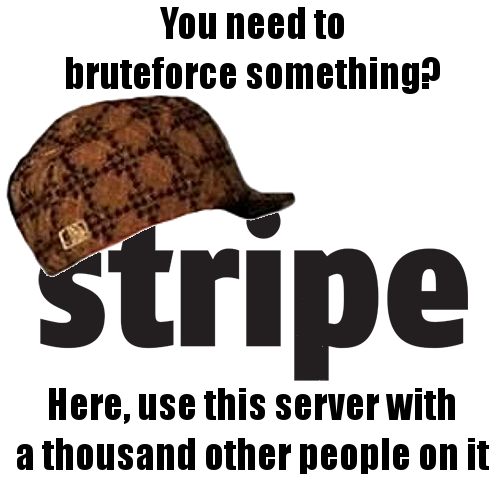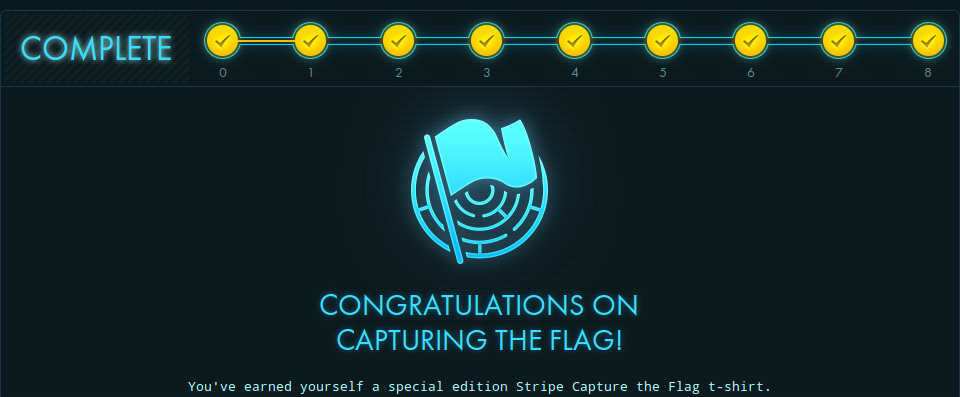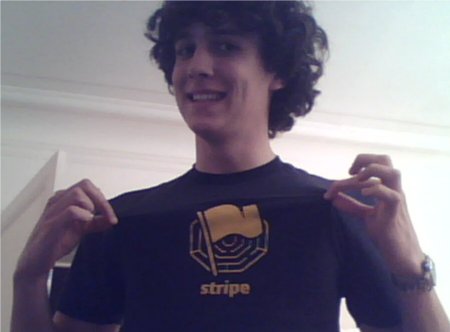Stripe CTF: Level #8
Posted on sam. 15 décembre 2012 in Write-up

You can find the code for this level here.
(sha256:
d211aa240a0a59eb1f56d3c42a55080d0e27eea2c04bc4410bf608824c847c96)
This is it. The final level to the Stripe CTF. The goal here is to retrieve a 12-digit password, which is too long to brute force. Let's see how we can use the protocol to our advantage.
The infrastructure looks like this:
- a central server, used to verify the password
- four "chunk" servers, which each knows only a part of the password
When you send a password to the central server, it cuts it in four pieces, and procedes like this:
- it asks the first chunk server if the first piece is correct
- if not, it sends a failure message to the client (and doesn't contact any other chunk server)
- if it is, it asks the second chunk server if the second piece is correct
- etc.
Furthermore, we can give the server a list of webhooks, to which it'll send the result.
Seeing the password verification protocol, I know what you're thinking: timing attack. Seeing how much time the server takes to respond, we can find how many chunk servers it contacted, thus how many chunk we 1012 possibilities, we're down to 4 × 103 possibilities, which is feasible.
The problem is that the server has a way to prevent timing attack:
# File primary_server, line 58
def nextServerCallback(self, data):
parsed_data = json.loads(data)
# Chunk was wrong!
if not parsed_data['success']:
# Defend against timing attacks
remaining_time = self.expectedRemainingTime()
self.log_info('Going to wait %s seconds before responding' %
remaining_time)
reactor.callLater(remaining_time, self.sendResult, False)
return
self.checkNext()
If a chunk is wrong, the server waits before telling the client he made a mistake. So we can't use a timing attack.
But there is another way to know how many chunk servers the primary contacted, and thus go from 1012 to 4 × 103 the webhooks. Here is the idea:
- when the primary server communicates with an external resource (whether it's a chunk server or a webhook), it opens a socket
- every time the primary server opens a socket, its client port is incremented by one
- the webhook knows the client port of the primary server
So, by looking at how much was the client port incremented between two responses, the webhook knows how many chunk servers were contacted. Indeed, let's say the first chunk is wrong: the primary server connects to the first chunk server, then to the webhook. The port is therefore incremented by two. If the first chunk is correct, but not the second is wrong, the primary servers contacts the first chunk server, the second chunk server, then the webhook. The port is incremented by three, etc.
So, knowing this we can't find the correct chunks, but we can eliminate the bad chunks, which is faster than bruteforcing the whole password, but still takes a lot of time. What's more, the primary server can only contact webhooks with URL ending with .stripe-ctf.com (in the production environment). Fortunately, we still have access to the level 2 server (remember, the one with the upload vulnerability?) We can upload an SSH key, connect, and then launch our webhook.
Unfortunately, I lost the source code of my custom webhook (sorry about that!). It was based on a webhook coded by a friend of Lopi. Basically, it tried every possible combination, chunk by chunk, and eliminated the bad ones as it did so.
The attack took something like two days, because I kept being disconnected of the server, and because there were so many people on it running their own webhook. I think it was kind of stubborn from Stripe to force the webhook to be on one of their server.

Anyway, after some time, you find the correct password, which you submit to the Stripe web site.

w00t!
That's it for the Stripe CTF! I know I took a lot of time writing these write ups, but I learned a lot from this competition, especially the SHA1 padding attack, how to find where to put my Javascript so it's executed, and how to obfuscate it. Plus I won a super cool t-shirt!
See you for another CTF!
